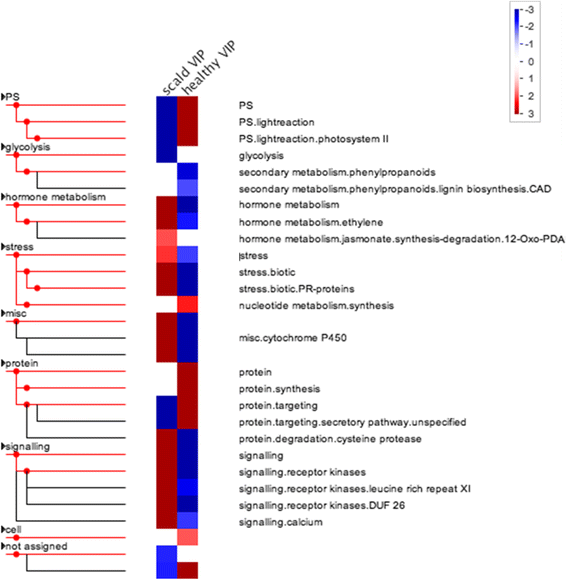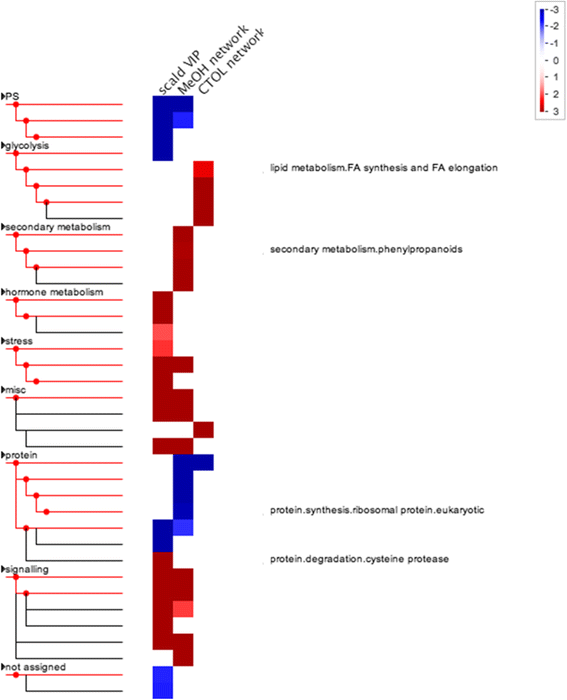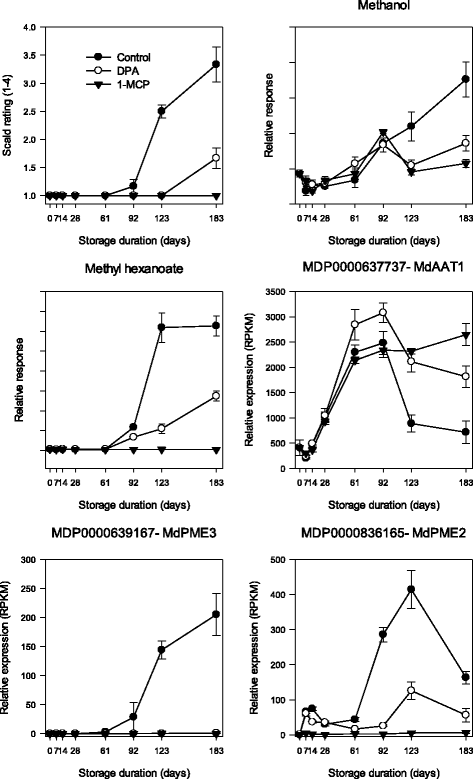Delayed response to cold stress is characterized by successive metabolic shifts culminating in apple fruit peel necrosis
- PMID: 28431510
- PMCID: PMC5399402
- DOI: 10.1186/s12870-017-1030-6
Delayed response to cold stress is characterized by successive metabolic shifts culminating in apple fruit peel necrosis
Abstract
Background: Superficial scald is a physiological disorder of apple fruit characterized by sunken, necrotic lesions appearing after prolonged cold storage, although initial injury occurs much earlier in the storage period. To determine the degree to which the transition to cell death is an active process and specific metabolism involved, untargeted metabolic and transcriptomic profiling was used to follow metabolism of peel tissue over 180 d of cold storage.
Results: The metabolome and transcriptome of peel destined to develop scald began to diverge from peel where scald was controlled using antioxidant (diphenylamine; DPA) or rendered insensitive to ethylene using 1-methylcyclopropene (1-MCP) beginning between 30 and 60 days of storage. Overall metabolic and transcriptomic shifts, representing multiple pathways and processes, occurred alongside α-farnesene oxidation and, later, methanol production alongside symptom development.
Conclusions: Results indicate this form of peel necrosis is a product of an active metabolic transition involving multiple pathways triggered by chilling temperatures at cold storage inception rather than physical injury. Among multiple other pathways, enhanced methanol and methyl ester levels alongside upregulated pectin methylesterases are unique to peel that is developing scald symptoms similar to injury resulting from mechanical stress and herbivory in other plants.
Keywords: Apple fruit; Cell death mechanism; Chilling stress; Malus × domestica Borkh; Metabolomics; Senescence; Transcriptomics.
Figures







References
-
- Lurie S, Watkins CB. Superficial scald, its etiology and control. Postharv Biol Technol. 2012;65:44–60. doi: 10.1016/j.postharvbio.2011.11.001. - DOI
-
- Bain JMA. A histological study of the development of superficial scald in Granny Smith apples. J Hortic Sci. 1956;31:234–238. doi: 10.1080/00221589.1956.11513873. - DOI
-
- Watkins CB, Bramlage WJ, Cregoe BA. Superficial scald of ‘Granny Smith’ apples is expressed as a typical chilling injury. J Am Soc Hortic Sci. 1995;120:88–94.
-
- Whitaker BD. Oxidative stress and superficial scald of apple fruit. Hortscience. 2004;39:933–937.
Publication types
MeSH terms
Substances
LinkOut - more resources
Full Text Sources
Other Literature Sources
Miscellaneous

